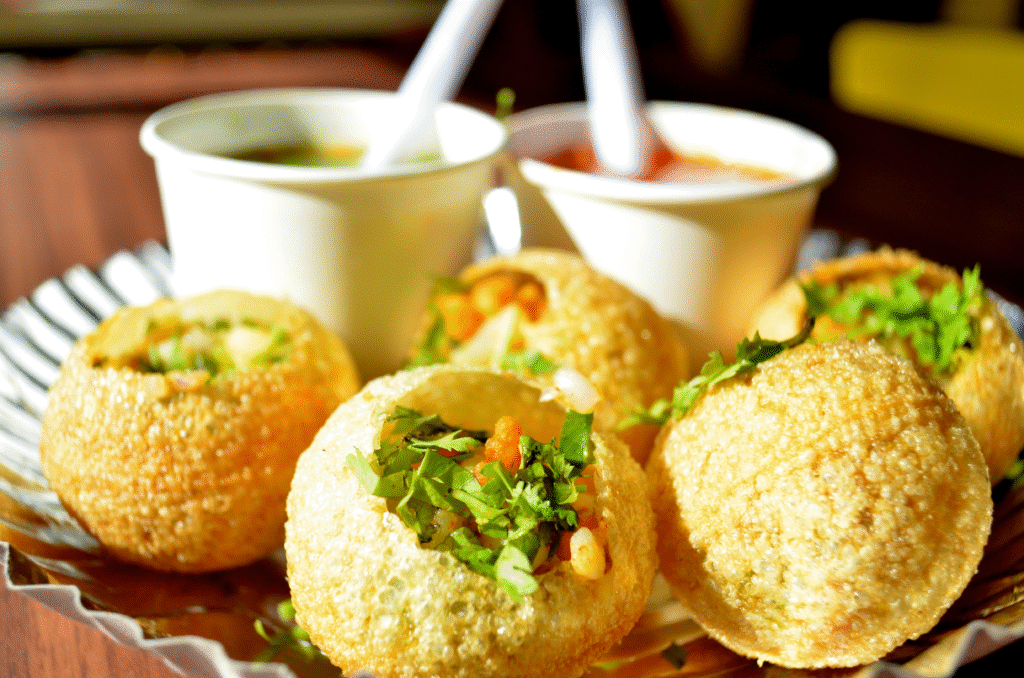
India’s street food scene is very much alive, which in turn sees Pani Puri (also known as Golgappa or Phuchka) at the top of the list of popular snacks. This affordable, tangy snack, which goes down well with all age groups, is a treat for the taste buds, also, which in turn is a great business opportunity. As India’s food industry grows and its street food joints increase in number, 2025 is the time to jump into the Pani Puri business.
Here is a guide that will take you through how to set up and run a successful Pani Puri business in India this year:
1. Identifying the Market Opportunity
In 2025, the street food market in India is projected to surpass INR 4,000 crore, which we attribute to urbanization, quick service trends, and a large growth in what we see as a health food trend, which includes pocket-friendly snacks. Pani Puri is seen as a huge player in metro, town, and what we may term as mid-scale city food scenes. Also, because of its low production cost and high profit, we see this as a very attractive business play for almost no investment.
2. Determine Your Business Model
In 2025, we will have developed several business models for Pani Puri.
Traditional Street Cart: In low-cost options, which include places like markets, colleges, and bus stops.
Small Kiosk or Shop: In urban and semi-urban areas, we ensure that we present to you hygienic and ambient settings.
Franchise Model: Brands such as Wow! Golgappa and Street Foods by Punjab Grill have options for franchise to those who have higher capital.
Online Food Delivery: Ties in with Zomato, Swiggy, and Blinkit, which now allows local vendors to deliver Pani Puri to your home.

3. Investment and Pricing Estimates
Street Cart: 30,000 60,000.
Small Shop/Kiosk: Rs 1.5 lakhs to Rs 3 lakhs
Franchise: 5 – 15 lakh.
Presently, we see which items make up the bulk of the costs (puri, potatoes, spices, chutneys), staff salaries (if any), and monthly rent (in terms of shop space). Although we put out that which is to be spent out of pocket, we do report a profit margin of 40% to 60% which is very good.
4. Legal Requirements and Issues Related to Registration
In 2025, to run a Pani Puri business, you will need to get basic registrations for smooth operations
FSSAI Certification is a requirement for all food-related businesses
For Shop and Kiosk Licenses.
If your annual turnover exceeds the GST threshold.
Local Government permits for food cart operation in public areas.
Compliance, which in turn builds trust, also attracts customers who value hygiene and safety.
5. Picking out a good location to choose
Location is key in food service. Go for places with high foot traffic, such as:.
Outside schools, colleges, and office complexes
Near shopping centers, markets, and bus stations.
Popular hangout zones and tourist spots
In 2025, digital location tags on Google Maps and food apps will increase your visibility.
6. Improving hygiene and quality
Post-pandemic, our customers’ tastes have shifted. Health and hygiene are what they are into.
Use gloves, aprons, and hairnets
Serve up clean water, which is a must to be either RO or mineral.
Introduce flavors such as mint, jeera, mango, or peri-peri to appeal to younger customers.
Maintain taste uniformity to secure repeat business.

7. Some tips that may help you in 2025 to succeed in your business:
Sustainability: Biodegradable bowls and spoons will be converted and will appeal to the environmentally conscious crowd.
Automation: Invest in automatic Pani Puri vending machines, which will ensure quick service and hygienic practices.
Customer Loyalty: Lure customers through cards having discounts like buy 5 and get 1 free
Final thoughts
To start Panipuri in India in 2025 is more than just selling a snack; it is a combination of tradition with modern trends. In the right combination of hygiene, creativity, marketing, and customer engagement, even a small cart can turn into a popular food brand. Low investment and huge profit, this business is seen as a very viable entry for any new entrepreneur, gaining confidence in the food industry.






